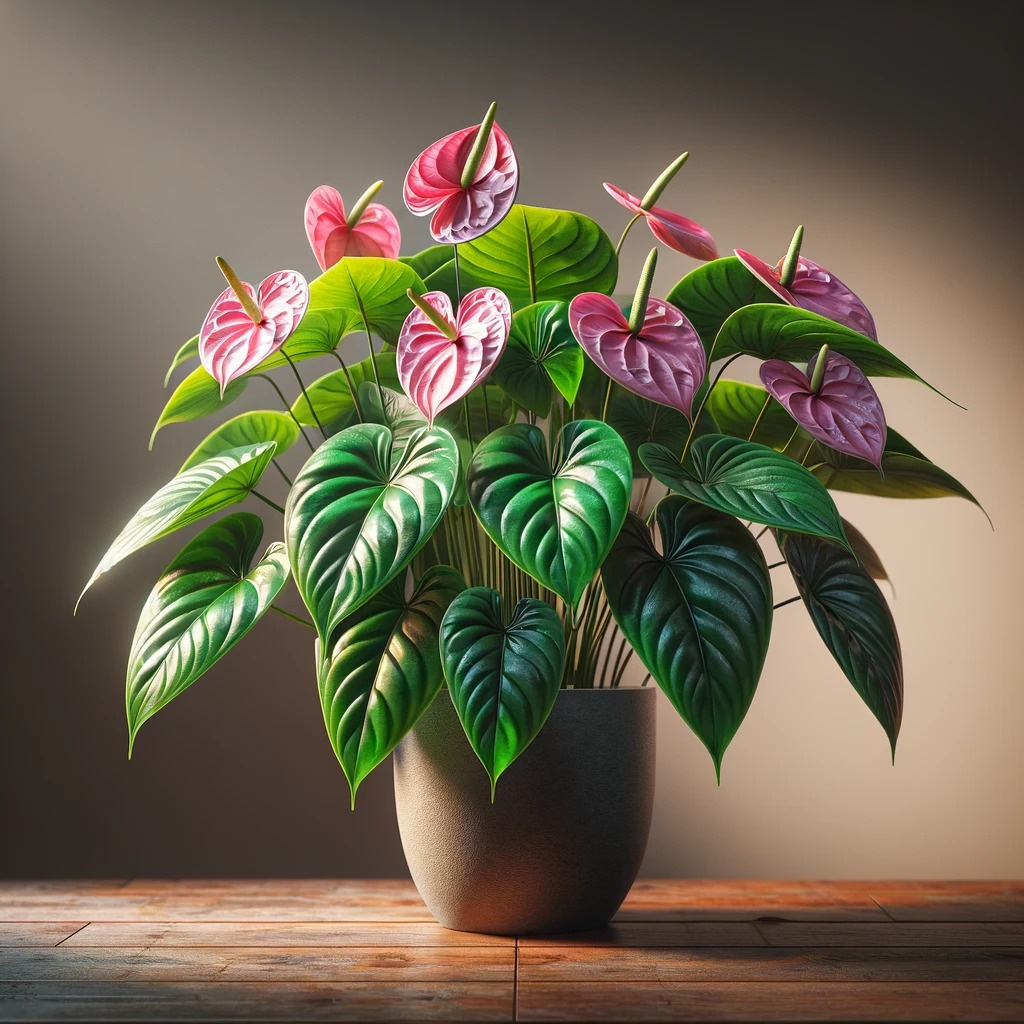Maintaining healthy and thriving Anthurium plants for many years involves paying attention to their specific care requirements. Here are some essential tips to ensure your Anthurium plant remains robust and vibrant:
1. Light Requirements
- Ideal Conditions: Anthurium plants prefer bright, indirect light. Avoid direct sunlight, as it can scorch the leaves.
- Indoor Placement: Place your Anthurium near a north or east-facing window where it receives filtered sunlight.
- Outdoor Placement: If outdoors, place Anthuriums in shaded areas to protect them from direct sunlight.
2. Temperature and Humidity
- Temperature: Anthuriums thrive in temperatures between 65-80°F (18-27°C) during the day and slightly cooler at night.
- Humidity: Maintain high humidity levels around 60-80%. Mist the leaves regularly or use a humidifier, especially in dry indoor environments.
3. Watering Practices
- Watering Frequency: Water Anthurium plants when the top inch of soil feels dry to the touch. Avoid overwatering, as it can lead to root rot.
- Water Quality: Use lukewarm water or allow tap water to sit overnight to dissipate chlorine and reach room temperature.
- Drainage: Ensure pots have drainage holes to prevent waterlogging.
4. Potting Mix and Repotting
- Potting Mix: Use a well-draining, aerated potting mix designed for epiphytic plants or orchids. A mix of bark, perlite, and sphagnum moss works well.
- Repotting: Repot Anthurium plants every 2-3 years or when roots outgrow the pot. Choose a slightly larger pot and refresh the potting mix.
5. Fertilization
- Fertilizer Type: Use a balanced, water-soluble fertilizer formulated for flowering houseplants or specifically for Anthuriums.
- Application: Apply fertilizer every 4-6 weeks during the growing season (spring and summer). Reduce frequency in fall and winter.
6. Pruning and Maintenance
- Pruning: Remove yellowing or dead leaves promptly to promote new growth and maintain plant health.
- Cleaning: Wipe dust off Anthurium leaves regularly with a damp cloth to keep foliage clean and allow better light absorption.
7. Pest Control
- Monitoring: Keep an eye out for common pests such as aphids, mealybugs, and spider mites.
- Treatment: Use insecticidal soap or neem oil to treat infestations promptly and prevent damage to the plant.
8. Winter Care
- Temperature: Protect Anthuriums from cold drafts and sudden temperature drops, as they prefer consistent warmth.
- Reduced Watering: During winter, reduce watering frequency slightly to accommodate the plant’s slower growth rate.
By following these guidelines and tailoring care to your Anthurium’s specific needs, you can enjoy healthy and thriving plants that continue to bloom beautifully for many years. Consistency in care, proper watering practices, and attention to environmental conditions contribute to long-term Anthurium success.


